Sheaffer's History
For many of us who love fountain pens, the time from their invention through to the 1950s and 1960s was the most interesting. When a fountain pen was as close as most people got to a mobile phone or laptop, there was a lot of incentive for people to make them better. Most of the innovations in fountain pens happened in that period. Once the ballpoint became common, then those newfangled typewriters and computers came along, fountain pens settled into a comfortable niche - much-loved by some of us still, but not something most people were going to spend a lot of money on.
And there were many innovators during that time. Parker, Waterman, and many others, all moved the technology forward. If you're interested mainly in how the ink gets from where it's stored to the nib, without dripping, Waterman's feeds paved the way. Parker brought the Lucky Curve feed, making things more reliable. And their Collector in the Parker "51" led to the feeds used in many of the best rollerballs today.
But if your real interest lies in how the ink gets into the pen, or in the shapes of nibs, Sheaffer might well be your favourite.
A Short History of Sheaffer
Sheaffer began way back in 1907, when William A Sheaffer started making pens in the back room of his jewellery business. He patented a design for a lever-filling pen, and continued to improve it over the next few years, making the company very successful.
They continued to innovate over the years, coming up with new designs for nibs, new ways of filling pens, and using improved materials.
The Nibs
Nibs on fountain pens, are, for the most part, well, nib-shaped. And so are the nibs on many Sheaffer pens. But many are not, which is unusual. They had two major nib types that made their pens instantly recognisable, and very obviously different to others.
Inlaid Nib
In a 'normal' fountain pen, the pen body ends in a tube, and inside the end of the tube is the feed. Between the two, the nib sits, with the feed extending under it. The feed passes ink to the nib from underneath, and the nib guides that ink to the paper.
Sheaffer's inlaid nibs were quite different - instead of part of the nib disappearing inside the pen, the entire diamond-shaped nib sits proudly on the outside, glued in place, and fitted flush with a cut-out area of the pen body. The result works much the same way as any other nib, but looks very different, and gave many of their pens a uniquely Sheaffer style.
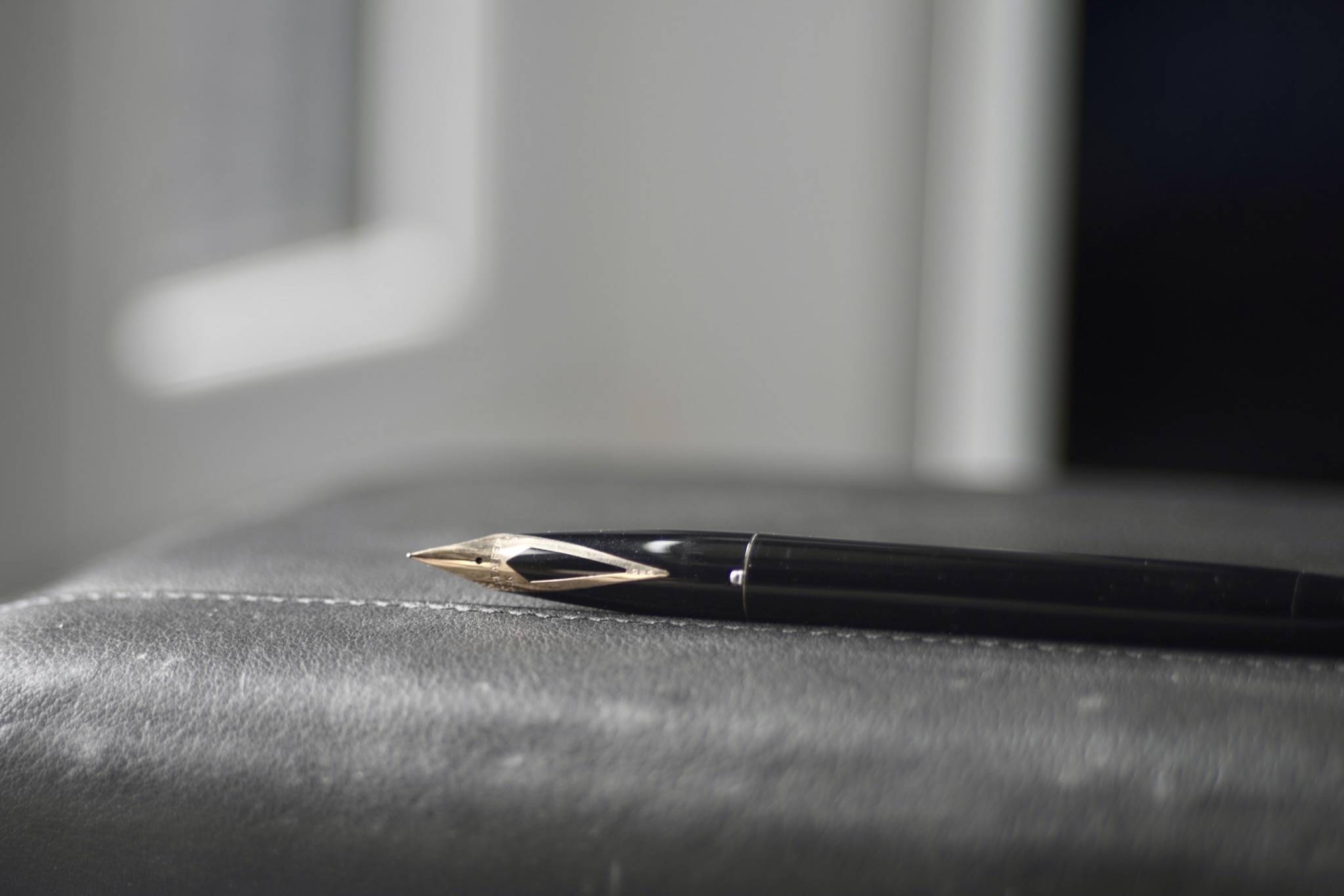
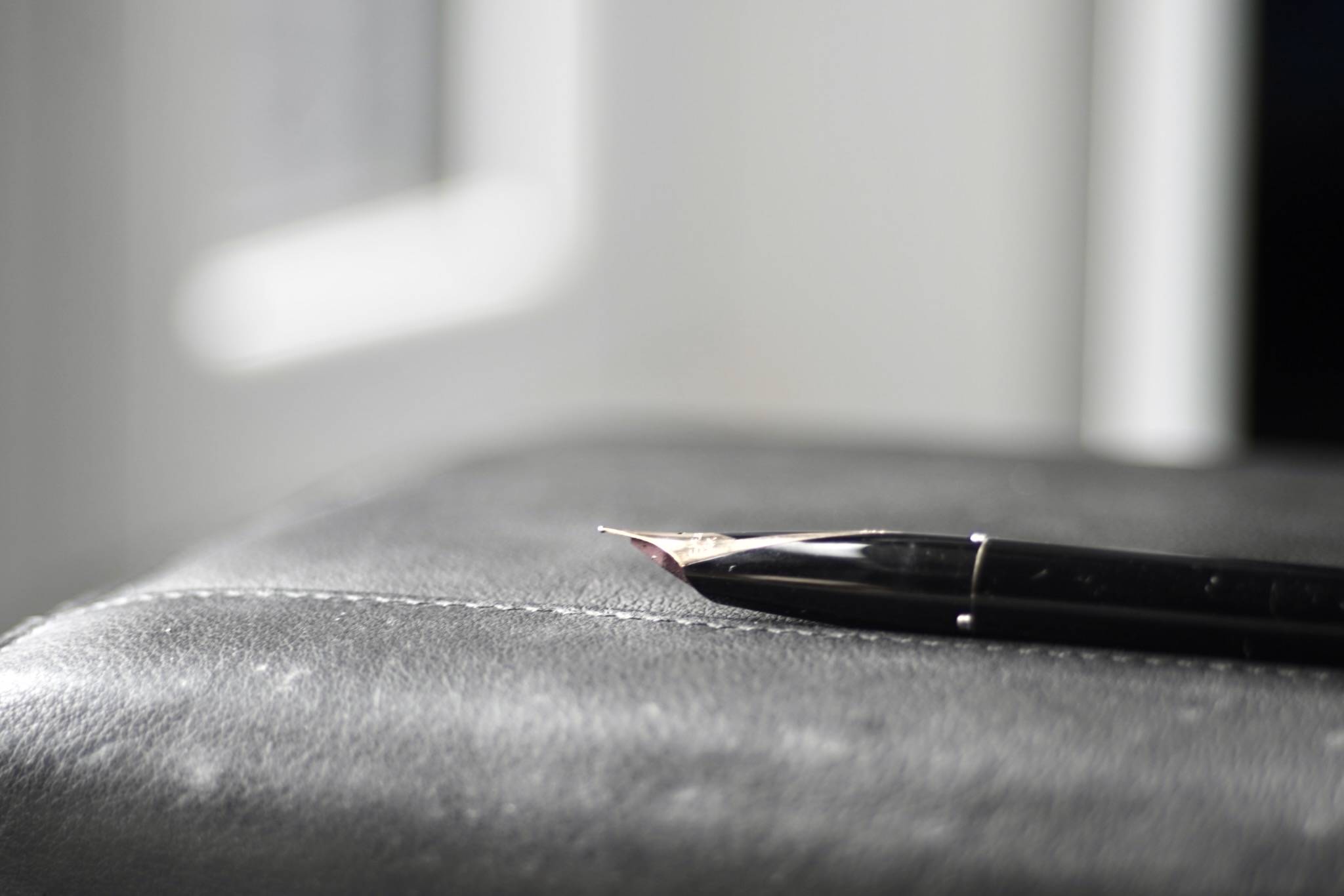
Triumph Nib
Just as instantly recognisable, yet quite different, the Triumph nib was a tubular shape, so the end of the pen disappeared into a full metal tubular nib, extending on the top to form the nib itself. They were made with a little up-turn at the end, in a style often called "Waverley" for the first pens to popularise it.
The results not only looked good, but worked well too, and could be very strong. Nibs that could take more writing pressure came into demand more for a couple of reasons. For writing on carbon paper, extra pressure was needed; and people who were more used to writing with those new ballpoints often got in the habit of using more pressure than was good for most fountain pen nibs.
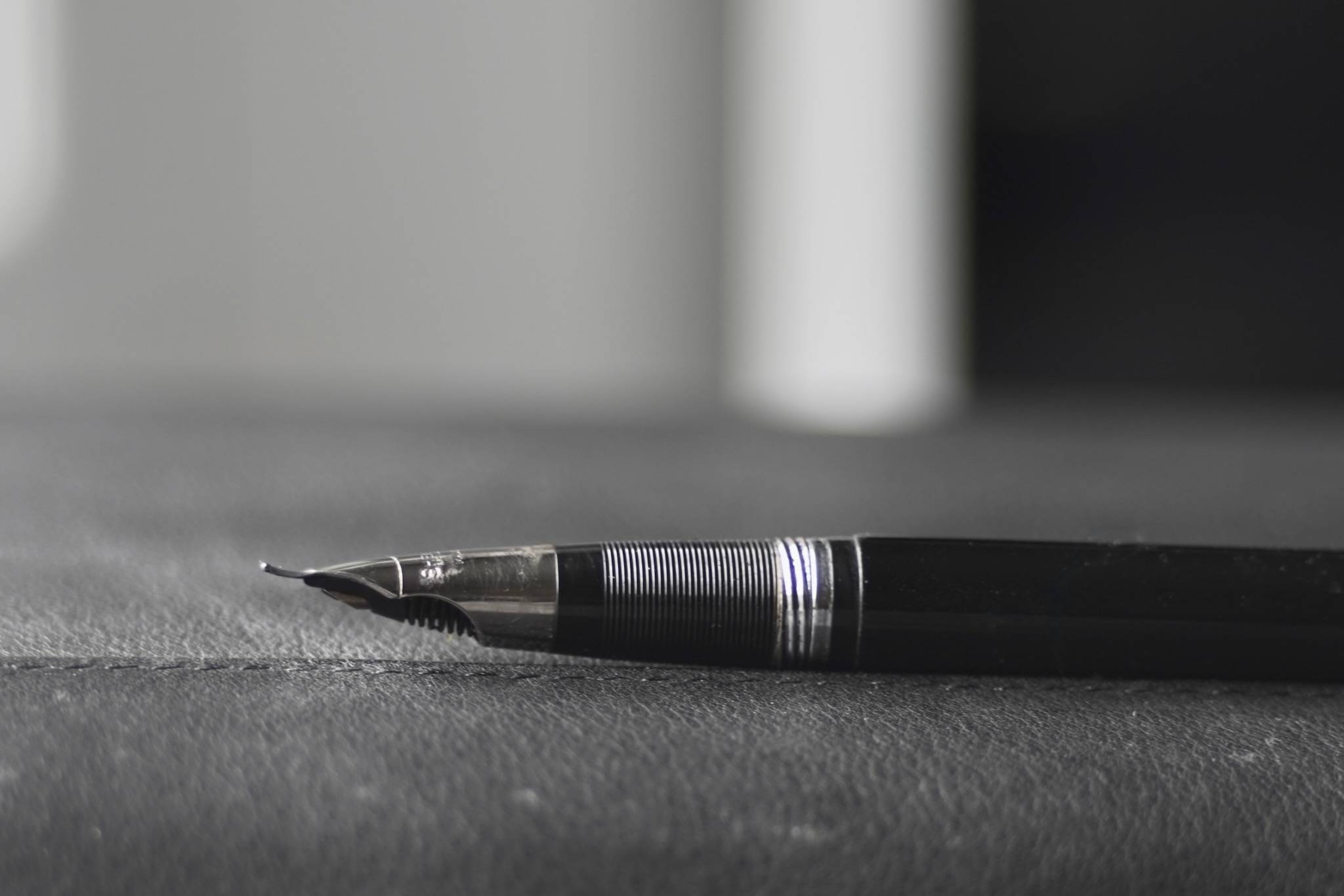
The Filling Systems
Early on, Sheaffer pens used similar filling systems to other pens - lever fillers were common. But later on, they came up with some interesting tricks.
Touchdown
The Touchdown mechanism was on the more complicated side compared to most, but worked well. In use, you just unscrewed the blind cap at the back of the pen, pulled up on it, dipped the pen in ink, and pushed it back down. It slurped up ink. It was quite clean and reliable, and very easy to use.
Inside, there was a rubber sac, as with almost all pens of the time. Cleverly-placed air holes meant that when you pushed the Touchdown tube downward, air inside the pen crushed the sac, pushing all the air, and any remaining ink, out. When the tube reached the bottom, air could rush in again, the air pressure was released, allowing the sac to spring back into shape, drawing ink in through the feed.
Snorkel
In many ways, the ultimate innovation in filling mechanisms, the Snorkel was as complicated as they come, but was still remarkably reliable. Many are still in use, well over 50 years after they were made, usually only needing a replacement sac.
The basic mechanism was the same as the Touchdown, but now the sac and its protective casing were mounted with a thin tube that extended through the middle of the feed. In normal use, it ended flush with the feed, hidden inside the feed (and often wrapped in one of those beautiful Triumph nibs).
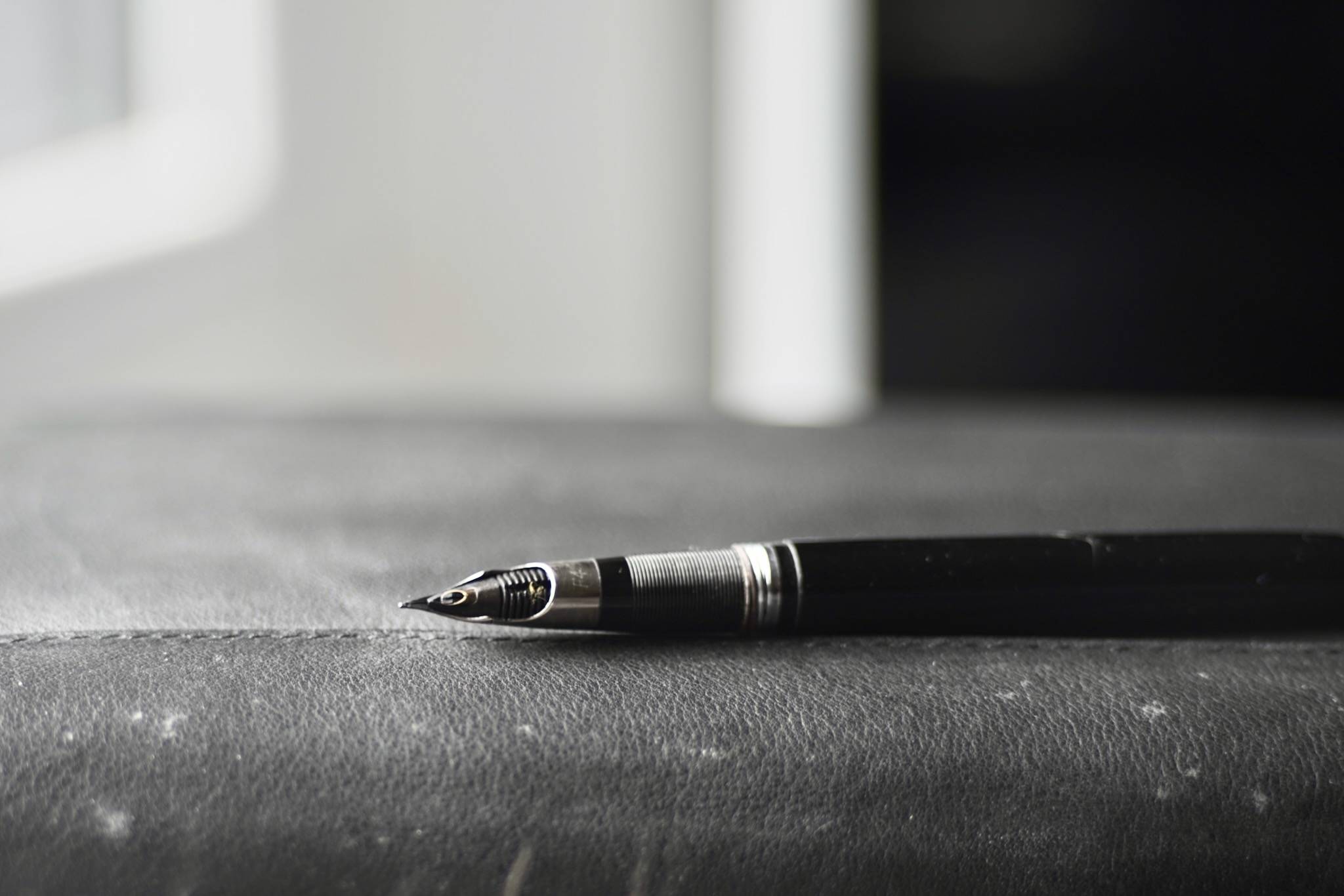
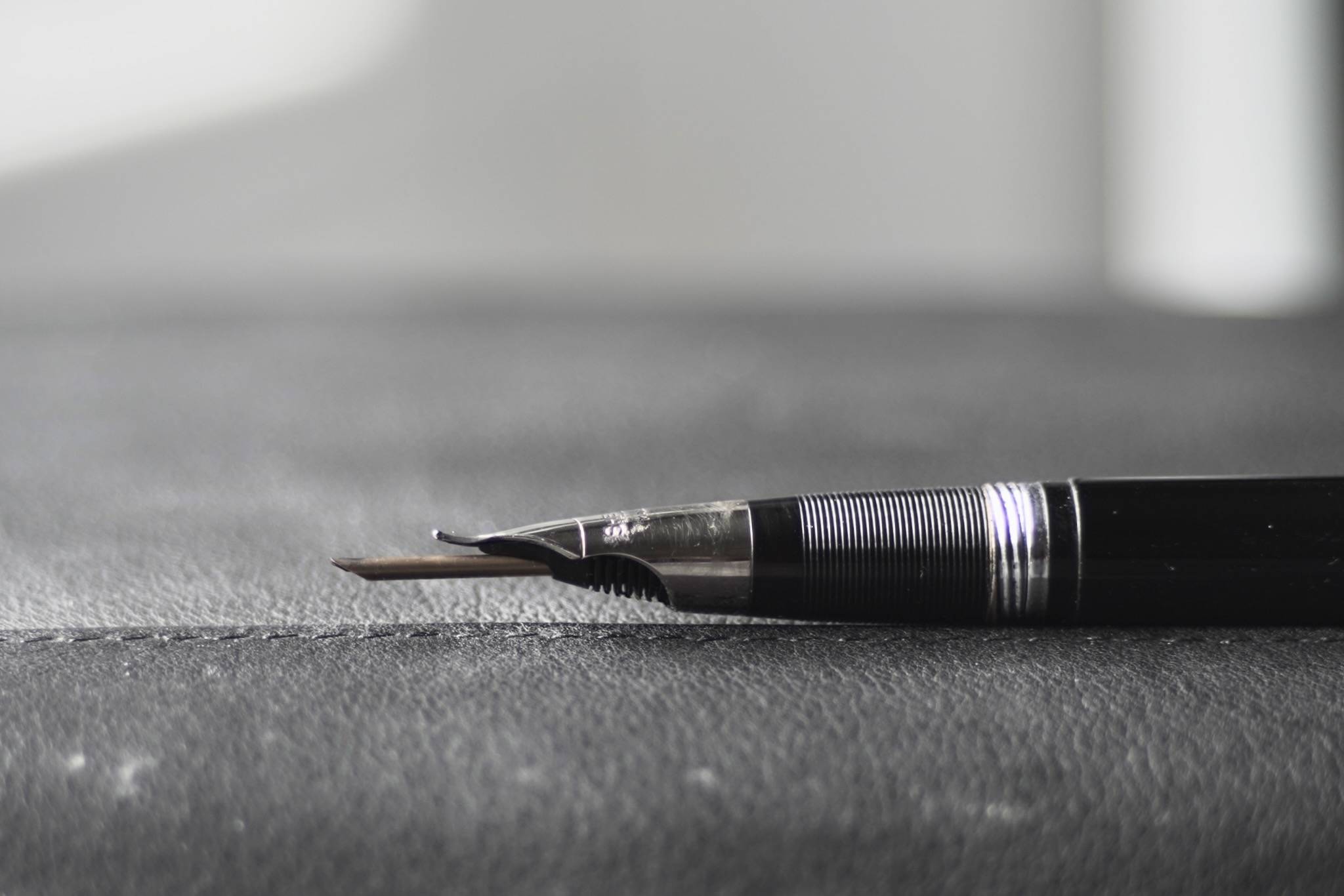
But when you twisted the blind cap on a Snorkel pen, the first thing that happened was that the Snorkel tube extended out through the feed, to reach out past the nib. On the inside, that entire 'Touchdown' part, the sac and its case, were all moving down too. Once in place, it was operated exactly like a Touchdown - pull up, push down, the pen fills - but with one advantage: the nib didn't need to touch the ink.
That was the unique selling point of the Snorkel - 'no dunk'. The nib didn't have to touch the ink, so it didn't get ink on it. No more wiping, and less risk of inky fingers. Quick, easy and clean. And with an added bonus - that thin tube could get the last drops of ink out of a bottle, where most pens couldn't reach.
The Snorkel mechanism was also paired with an inlaid nib in a thicker pen called the PFM, or Pen For Men. Not a name that would go down so well these days, and if we go by how many of each type we see around today, maybe not as popular as Sheaffer would have hoped at the time. Personally, I've used both, and the standard TM (Thin Model) Snorkels have a much higher quality feel to me.
Cartridges
Sheaffer was one of the early adopters in the world of ink cartridges. And while collectors and fountain pen fans may often prefer 'real' filling systems, drinking their ink from a bottle, it's very hard to argue with the convenience of cartridges, and easy to see why they became so popular so quickly.
The idea was simple. Instead of having to carry a glass bottle of ink, and find a stable flat surface for filling your pen when it ran out, you could have a cartridge, or several, in a pocket or bag. Old one out, new one in, carry on writing.
For many of us now, filling our pens is a nice little ritual. A short break, almost meditative. But for most people, it was just an annoyance that had to be done. And it brought a risk of making a mess every time. The cartridge took away the risk, and turned the annoyance into a very quick and easy task.
Ballpoints
Then, of course, along came the ballpoint pen, and slowly turned fountain pens from a must-have item for almost everyone, into a niche item, only used by those who love them. And maybe that's not such a bad thing. For those who just want to write something, the pen is just a means to that end, and shouldn't they be able to write something as easily as possible?
Sheaffer were innovators with ballpoints too, with the Feather Touch refills able to write with so little pressure that they demonstrated in their advertising using them to write on the soft inner lining of an egg. Oh, and on the paper of a cigarette, too, perhaps another that wouldn't be done now.
Vintage Sheaffer Ads
As a little bonus, just as we were preparing this post, the Sheaffer Museum posted this wonderful collection of Sheaffer ads on YouTube - well worth a watch:
